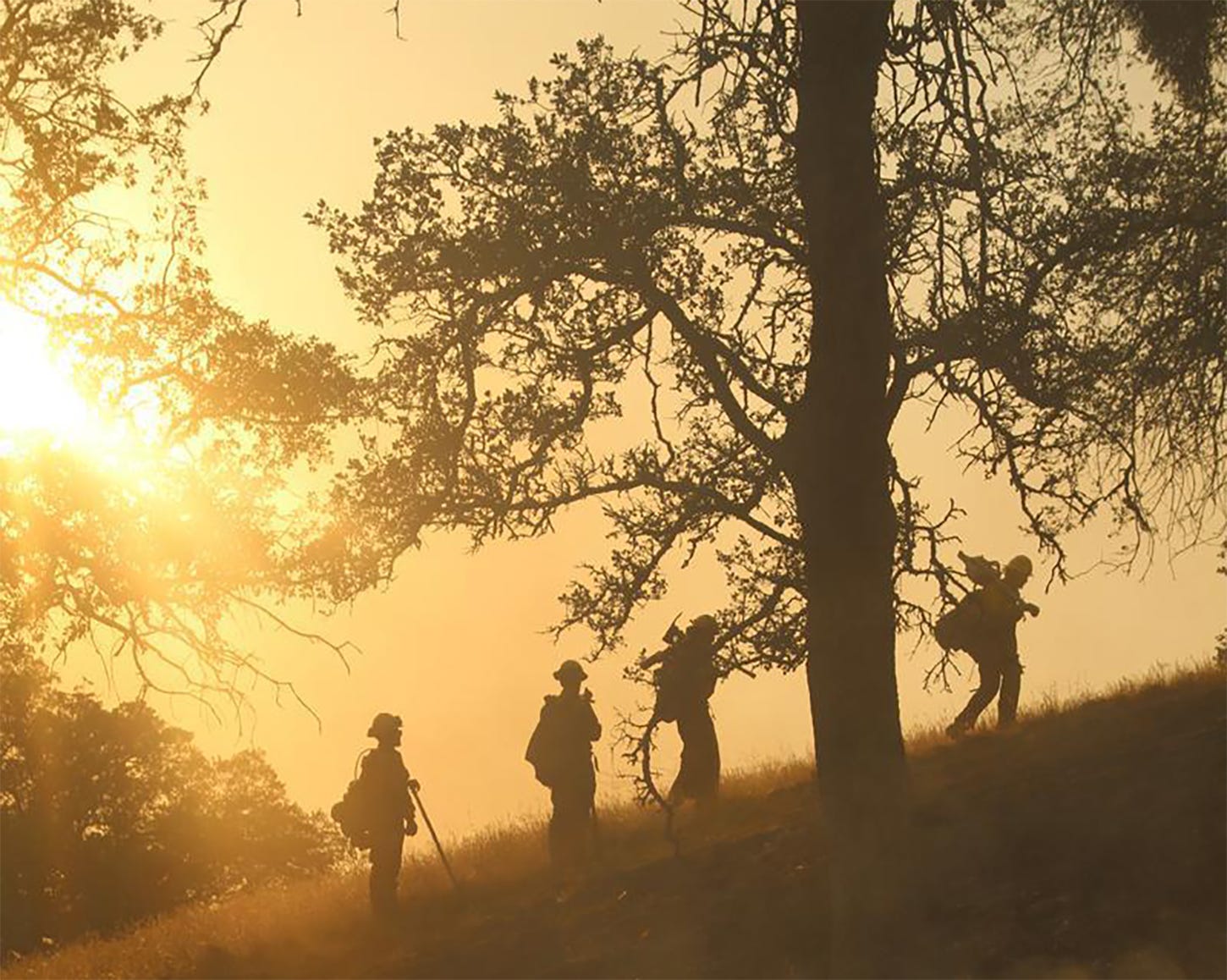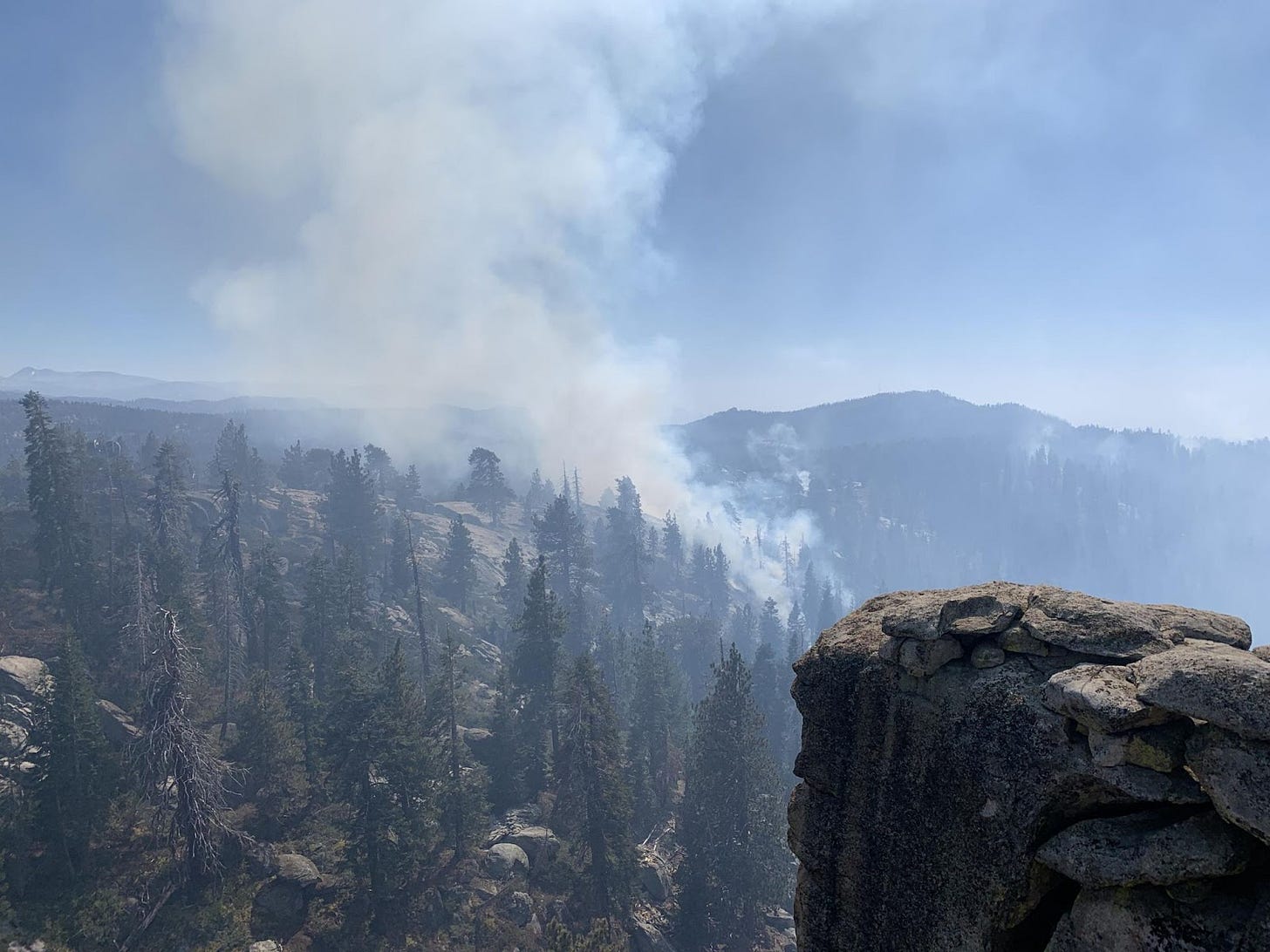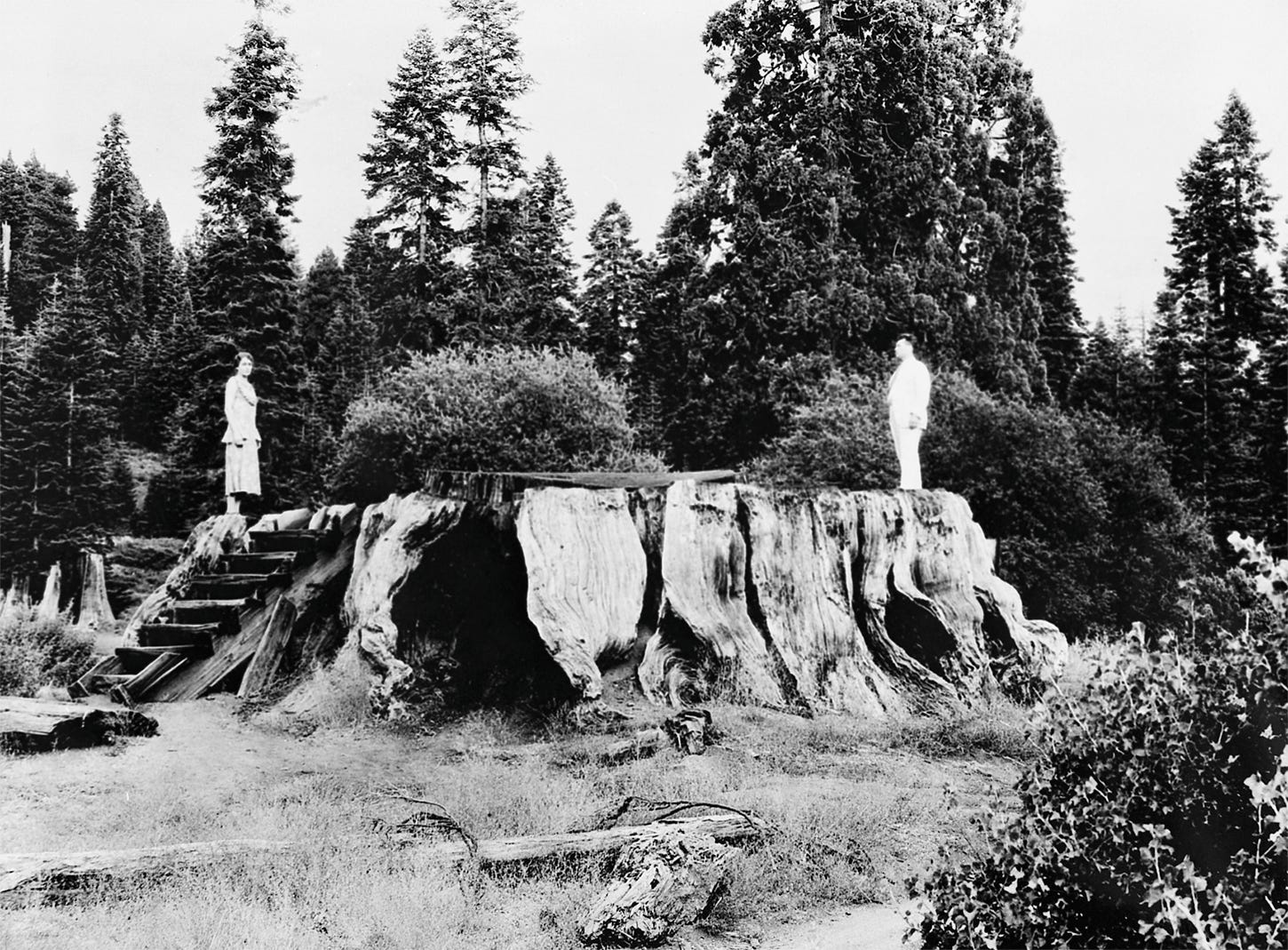
Perspective
WITH WARS AROUND THE WORLD and the House of Representatives still without a Speaker, there is much to concern us. I sometimes struggle to focus with so much going on, and it helps me to dive into a topic I might not know much about, like wildland firefighter pay.
Last month, the federal Wildfire Fire Mitigation and Management Commission issued a 340-page report about the wildfire crisis in the United States.
In California, where we’ve had two back-to-back fire seasons that were far less severe than in recent years, it might seem that there is no wildfire crisis. But I doubt that anyone believes that, which is why I took some time to review this report that you can read HERE.
Congress established the Wildfire Fire Mitigation and Management Commission through the 2021 Infrastructure Investment and Jobs Act. The 50-member commission was tasked with creating policy recommendations to address nearly every facet of the wildfire crisis — including mitigation, management and post-fire rehabilitation and recovery.
According to the executive summary, the recommendations “outline a new approach to wildfire, one that is proactive in nature, better matched to the immense scale and scope of the crisis, and more reflective of the multi-scalar, interrelated nature of the overall system.”
There are lots of fancy words there, and I’ll leave it to you to read as much of the report as you might like. But for now, I’m going to focus on Recommendation 84: “Increase wages and benefits for the federal wildland fire workforce.”
According to a November 2022 report from the General Accounting Office, the federal wildland firefighting workforce is composed of approximately 18,700 firefighters (including fire management and support staff) from the Department of Agriculture's Forest Service and from four agencies in the Department of the Interior. The Interior agencies are the Bureau of Indian Affairs, Bureau of Land Management, Fish and Wildlife Service, and National Park Service.
In California, you may know, the state recently mandated pay of at least $20 per hour for fast food workers. More than 47% of lands in California are federal, meaning that we depend upon federal workers — including wildland firefighters — to take care of that land and protect surrounding communities.
According to the commission’s report, a 2023 study that focused on federal wildland firefighters found those employees’ compensation trails that of state agencies in California, Colorado, Oregon, and Washington by an average of 33 percent. The same study also found that benefits packages for federal wildland firefighters, including healthcare and retirement contributions, were well below those of state agencies.
And you might be shocked to learn that as of 2023, pay for federal firefighters began at $15 per hour. The commission’s report notes that while these employees also receive pay for overtime and hazardous duty, higher pay was available for less hazardous work in other sectors. (At fast food restaurants in California, for instance).
Here’s more from the commission’s report:
With current pay rates, many in the wildland fire workforce cannot afford to live in places where they work. The problem is significant enough that some firefighters have been reported to live in tents or out of their cars during fire season due to the inability to cover the cost of housing. Because of low base wages and guaranteed hours, firefighters have come to rely on and expect significant overtime and hazard pay, but that can have adverse impacts on work-life balance and exposure to fire-related risks and hazards. Though less tangible, pay disparities between state and federal firefighters working side by side on a fire can also be a blow to morale.
Without adequate compensation, many in this profession cannot sustain a long-term career as federal firefighters.
The issue of low pay is not limited to firefighters, however. The $15 per hour minimum wage applies to General Schedule (GS) grades 1-4, which often include staff working in wildfire mitigation, prevention, or recovery. A range of federal agencies that employ these staff have reported difficulties hiring due to salaries that do not match high costs of living. Low pay and high turnover — both from vacancies and promotions — can impact important proactive mitigation projects when, for example, environmental assessments on those projects are delayed because the local unit has been unable to hire the necessary specialists. Such vacancies also create problems for partnership and collaboration as relationships must be made anew after staff turnover.
The commission also notes not just wildland firefighting but also prescribed burning operations and planning, conducting and monitoring such activities are negatively impacted by federal pay policies.
Recommendation 84 includes specifics about ways Congress can address these issues. But first, it must elect a new Speaker of the House, which might happen tomorrow (or might not). Although the commission’s report includes 148 very specific recommendations — and is complete with a draft of the legislation that would be needed to enact the recommendations — I have no confidence that Congress will address the issues in the report it commissioned barely a year ago. I’m not even sure it will keep our government open after Nov. 17, when the current continuing resolution will expire.
Town Hall meeting for Calaveras Big Trees State Park tonight
An update on current and future forest management work at Calaveras Big Trees State Park will be provided during a public Town Hall to be held in the Ralston Classroom at the park (near the visitor center) at 6 p.m. tonight, Monday, Oct. 16.
Although the meeting will be streamed live via Microsoft Teams, state parks officials recommend in-person attendance when possible for the best experience.
Register for the meeting HERE.

Wildfire, water & weather update
Warming up, then cooling down with a chance of rain about 10 days out in much of the Sierra Nevada. In other words, beautiful fall weather, although temperatures may be higher than average in some areas. The Los Angeles Times has a story this morning about rising temperatures in Southern California increasing fire risk. You can read it HERE.
The best Sierra Nevada weather forecasts can be found at NWS Hanford, HERE, and NWS Sacramento, HERE.
Wildfire update: A few small fires and prescribed burning continues at many locations in the Sierra Nevada. If you check out the WatchDuty map HERE you’ll see a string of green flame icons.
Wildfires include the King Fire on Sierra National Forest (124 acres with 50% containment as of Oct. 14), the Rabbit Fire on Sequoia National Forest (1,608 acres with 25% containment as of yesterday) and the Redwood Fire (1,967 acres with 45% containment in Sequoia National Park).
Prescribed burns include Big Stump-Redwood on Sequoia National Forest, which is over 3,078 acres, and the 33-acre Yosemite Prescribed Burn.
Wildfire smoke is impacting air quality in some areas of Central California:

Did you know you can comment here?
It’s easy to comment on items in this newsletter. Just scroll down, and you’ll find a comment box. You’re invited to join the conversation!
Giant sequoias in the news
• Possibly nothing you don’t already know here, but the New York Times this morning has an article with the headline: “The past 12 months in California were among the wettest ever.” Read it HERE (gift link) and an excerpt:
The favorable weather has also probably helped quiet California’s fire season. So far, 317,191 acres have burned in California this year, compared with an average of 1.5 million by this point in the past five years.
• Also in the NYTimes this morning, an article reporting that a climate advocacy group will fund an $80 million ad budget intended to help President Joe Biden. Read more HERE (gift link).
• An opinion piece in the San Francisco Chronicle this morning calls for protecting Yosemite by limiting vehicles. Read it HERE (gift link).
• SFGate on Friday (the 13th) had an interesting piece about the cemetery at Yosemite. Read it HERE.
• The Fresno Bee carried an opinion piece about healthy forests by C.J. Wilson is a freelance writer and outdoor-environmental educator in Fresno on Saturday. Read it HERE, an an excerpt:
Managing soil health and reducing things like microplastics and air pollution can be as important as planting those big, eye-catching trees. Likewise, we need to remember how our seemingly small actions can do big damage. Remember the moss and the fungus: crucial and fascinating, but overlooked and fragile.
Historic photo of the week

Here’s what the National Park Service has to say about this stump: “Known as the Mark Twain Tree, this Giant Sequoia reached 16 feet (4.8 meters) in diameter. Even after the national park was established, travel to the sequoia groves was difficult, and many people simply didn't believe trees could grow so large. In 1891, the Army cut down this sequoia so it could be displayed to astonished crowds in New York and London.” You can see a more modern color photo HERE, and there’s more about the tree that once grew in what is now Kings Canyon National Park and what it took to cut it down HERE.
Thanks for reading!



